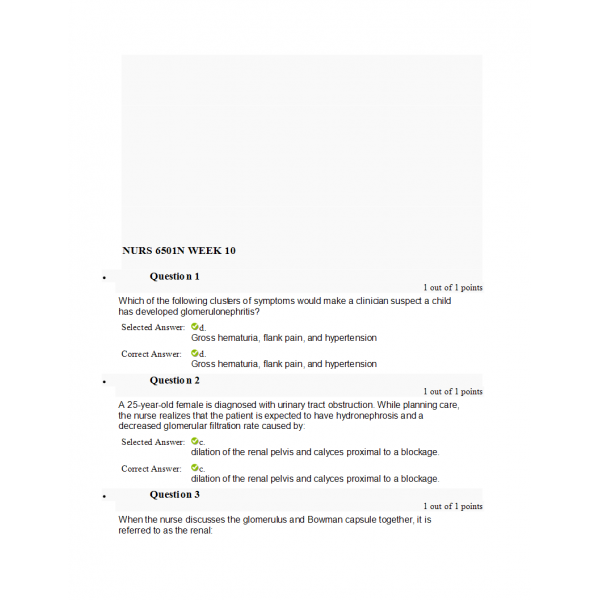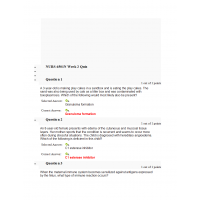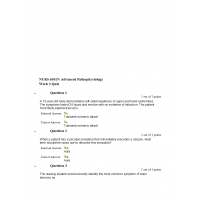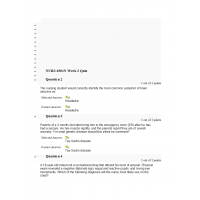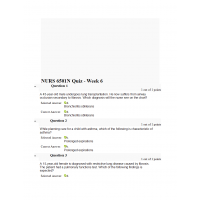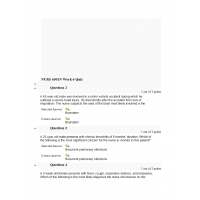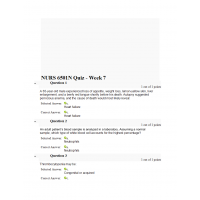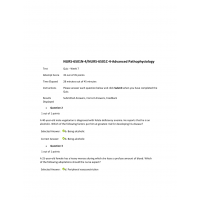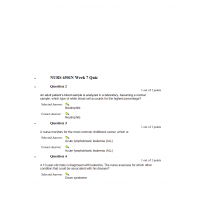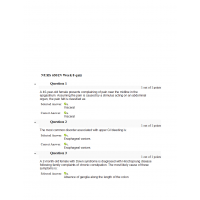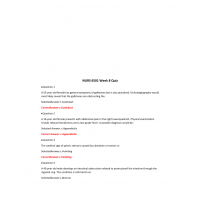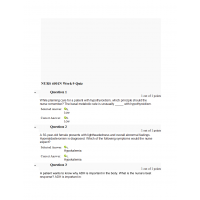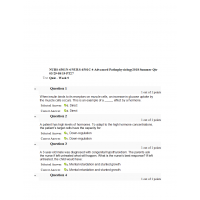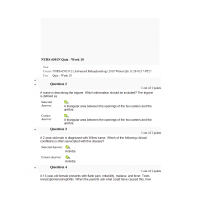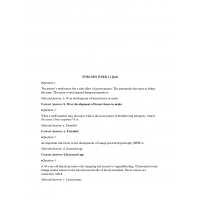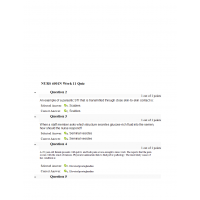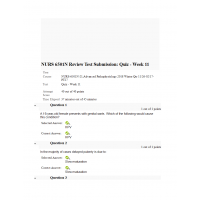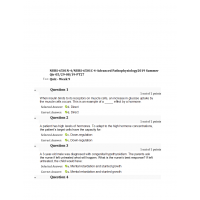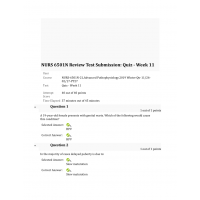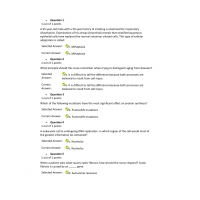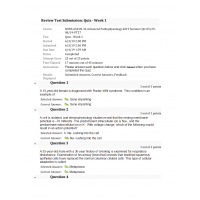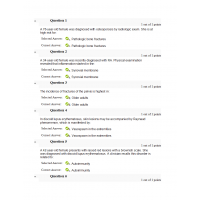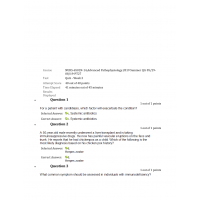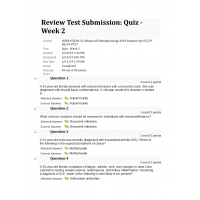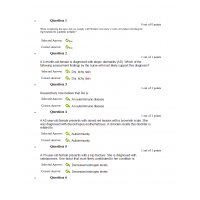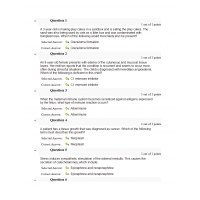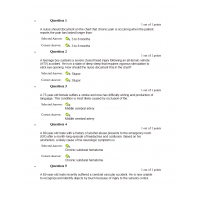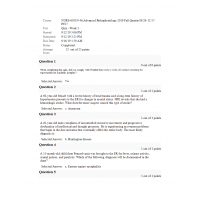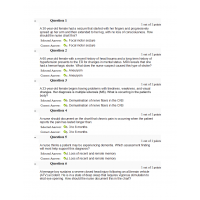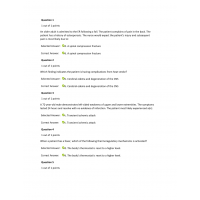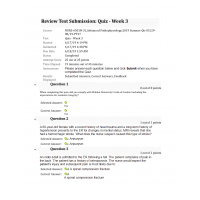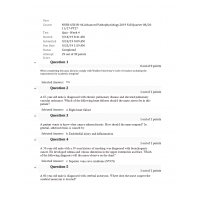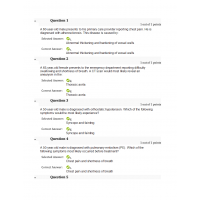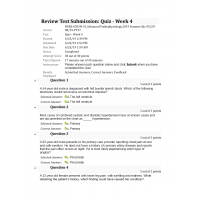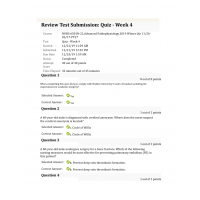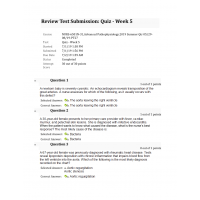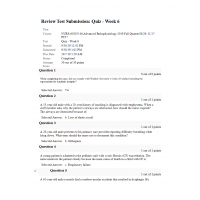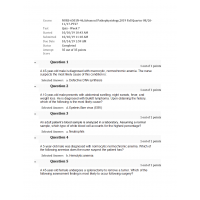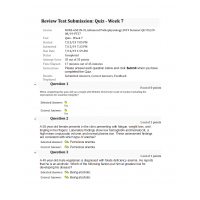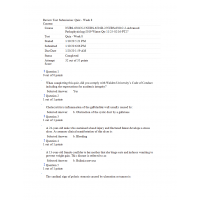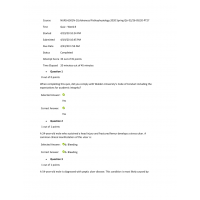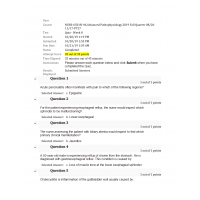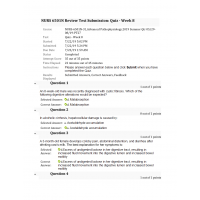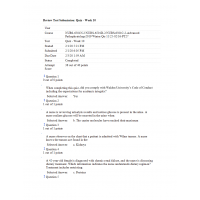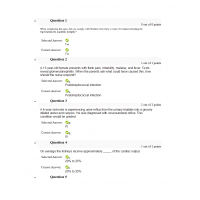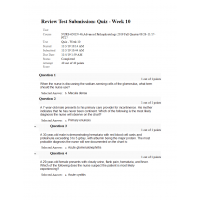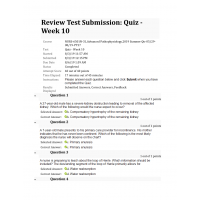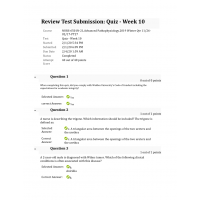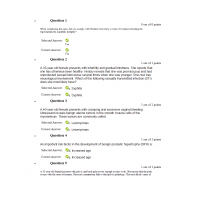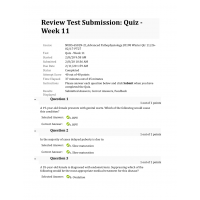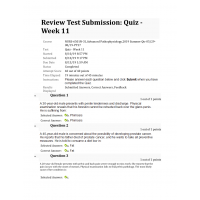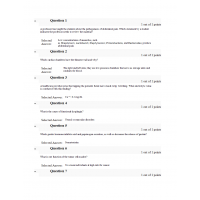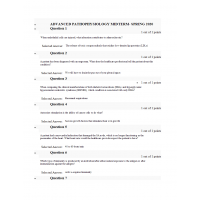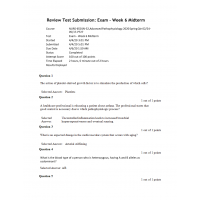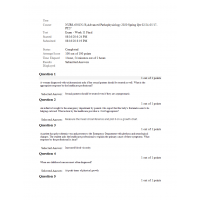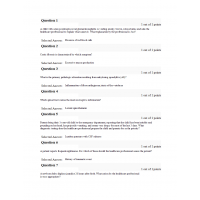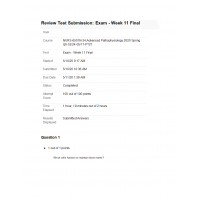NURS 6501N Week 10 Quiz 1 with Answers (40/40 Points)
NURS 6501N WEEK 10 Quiz
1. Which of the following clusters of symptoms would make a clinician suspect a child has developed glomerulonephritis?
2. A 25-year-old female is diagnosed with urinary tract obstruction. While planning care, the nurse realizes that the patient is expected to have hydronephrosis and a decreased glomerular filtration rate caused by:
3.When the nurse discusses the glomerulus and Bowman capsule together, it is referred to as the renal:
4.When a child is admitted with acute renal failure, a clinician realizes the most common cause of acute renal failure is:
5.A 7-year-old male presents to his primary care provider for incontinence. His mother indicates that he has never been continent. Which of the following is the most likely diagnosis the nurse will observe on the chart?
6.Anemia accompanies chronic renal failure because of:
7.A nurse is preparing to teach about the loop of Henle. Which information should be included? The descending segment of the loop of Henle primarily allows for:
8.A urologist is discussing the phagocytic cells that lie between the layers of the renal corpuscle. What is the urologist describing?
9.A 42-year-old male is involved in a motor vehicle accident during which he loses a lot of blood. The nurse realizes he is in acute renal failure caused by:
10.A 55-year-old male presents reporting urinary retention. Tests reveal that he has a lower urinary tract obstruction. Which of the following is of most concern to the nurse?
11.If a nurse wants to obtain the best estimate of renal function, which test should the nurse monitor?
12.A 30-year-old male is demonstrating hematuria with red blood cell casts and proteinuria exceeding 3 to 5 g/day, with albumin being the major protein. The most probable diagnosis the nurse will see documented on the chart is:
13.A 35-year-old female was severely burned and is hospitalized. She is now suffering from acute tubular necrosis (ATN). Which of the following is the most likely diagnosis the nurse will observe on the chart?
14.When describing the male urinary anatomy, which information should the nurse include? The portion of the male urethra that is closest to the bladder is the _____ portion.
15.While turning a patient with chronic renal failure, which principle should the nurse recall? Bone fractures are a risk factor in chronic renal failure because:
16.A 2-year-old male is diagnosed with Wilms tumor. Which of the following clinical conditions is often associated with this disease?
17.A nurse is describing the trigone. Which information should be included? The trigone is defined as:
18.While planning care for a patient who has acute pyelonephritis. A nurse recalls the most common condition associated with the development of acute pyelonephritis is:
19.A 24-year-old female is diagnosed with renal calculus that is causing obstruction. Which of the following symptoms would she most likely experience?
20.A 25-year-old female presents with burning urination. She was diagnosed with a urinary tract infection. When the nurse checks the culture results, which of the following organisms is most likely infecting her urinary tract?
21.While planning care for a patient with renal calculi, the nurse remembers the most important factor in renal calculus formation is:
22.A 5-year-old male was diagnosed with glomerulonephritis. History reveals that he had an infection 3 weeks before the onset of this condition. The infection was most likely located in the:
23.A urologist is discussing a structure that supplies blood to the medulla. What is the urologist describing?
24.A 35-year-old hypertensive male begins taking a diuretic. Which of the following common side effects of this medication should the nurse monitor?
25.When a nurse is preparing to teach about urine, which information should the nurse include? Just before entering the ureter, urine passes through the:
26.A 30-year-old male is demonstrating hematuria with red blood cell casts and proteinuria exceeding 3 to 5 g/day, with albumin being the major protein. The most probable diagnosis the nurse will see documented on the chart is:
27.A 60-year-old male is diagnosed with renal failure. While the nurse is reviewing lab results, which of the following lab values would be most consistent with this diagnosis?
28.A 42-year-old female is diagnosed with chronic renal failure, and the nurse is discussing dietary treatment. Which information indicates the nurse understands dietary regimen? Treatment includes restricting:
29.A 4-year-old male is diagnosed with nephrotic syndrome. Which of the following assessment findings accompanies this condition?
30.A nurse is reviewing urinalysis results and notices glucose is present in the urine. A nurse realizes glucose will be excreted in the urine when:
31.A 75-year-old male reports to his primary care provider loss of urine with cough, sneezing, or laughing. Which of the following is the most likely diagnosis the nurse will observe on the chart?
32.A 56-year-old male presents with flank pain and polyuria. Tests reveal that he has an enlarged prostate. Which of the following types of renal failure should the nurse monitor for as it is the most likely to occur?
33.When a patient’s renal system secretes rennin, what effect will that cause in the body? It causes the direct activation of:
34.A nurse observes on the chart that a patient is admitted with Wilms tumors. A nurse knows the tumors are found in the:
35.A 29-year-old female presents with cloudy urine, flank pain, hematuria, and fever. Which of the following does the nurse suspect the patient is most likely experiencing?
36.A 19-year-old female was involved in a motor vehicle accident during which she sustained a closed head injury. She is now experiencing detrusor sphincter dyssynergia. Which of the following is the most beneficial medication treatment?
37.A 6-year-old male is experiencing urine reflux from the urinary bladder into a grossly dilated ureter and calyces. He was diagnosed with vesicoureteral reflux. This condition would be graded:
38.A 15-year-old female presents with flank pain, irritability, malaise, and fever. Tests reveal glomerulonephritis. When the parents ask what could have caused this, how should the nurse respond?
39.When a nurse is checking the urinalysis, plasma proteins should be absent from the urine because:
40.When the nurse is discussing the sodium-sensing cells of the glomerulus, what term should the nurse use?
| Institution & Term/Date | |
| Term/Date | Walden University |
-
$12.00
Related Products
Tags: NURS 6501N

